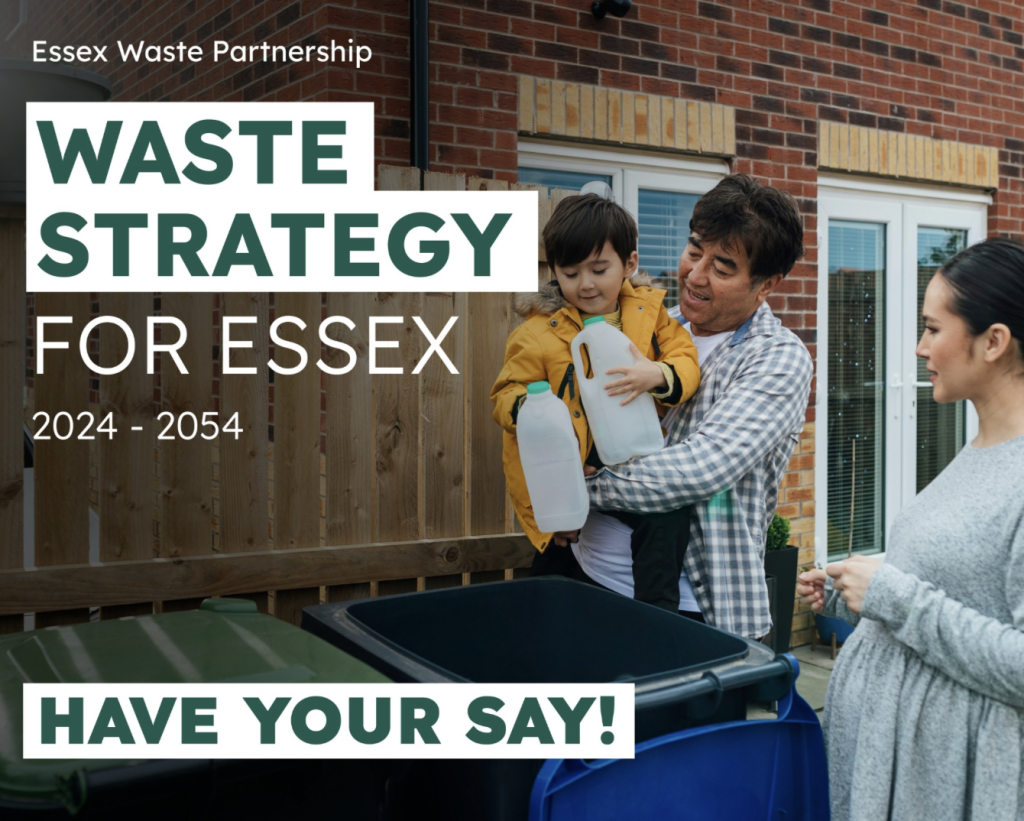The Waste Strategy for Essex consultation project
Step aside, Avengers. We have a new superhero squad in town. The Waste Strategy for Essex multidisciplinary team (MDT) is an astounding example of a successful multi-team collaboration. We spoke to Cathryn Wood, External Communications Advisor at Essex County Council, to find out more.
Essex County Council, along with 12 city, district and borough councils has drafted a new 30-year strategy for managing waste. The strategy outlines a comprehensive plan for managing waste from businesses and homes between 2024 and 2054. It focuses on reducing waste and maximising reuse, recycling and recovery of resources to minimise the environmental impact.
The council conducted a consultation for this draft strategy between September 13 and November 22, giving a chance for residents to have their say. The responses are currently being analysed and the final Waste Strategy for Essex will be published in 2024.

The team
The multidisciplinary team (MDT) consisted of Cathryn Wood, Amy Bowler, Zoe Alsford, Jackie Storr and Kerry Ambrose.
Objectives
The key objectives of the consultation were to:
- achieve a minimum of 2,500 responses
- reach at least 180,000 people (10% of the Essex population) through communications and marketing activity
- achieve at least 85% positive mentions across all media coverage mentioning the Waste Strategy for Essex consultation
- achieve at least ten news articles in media outlets and two interviews about the consultation
Challenges
The project’s biggest challenge was the technical complexity of the subject. “The Waste Strategy for Essex is a complex piece of work and isn’t necessarily the easiest thing to explain to the general public,” said Cathryn. “The Strategy and supporting documents like the Strategic Environmental Assessment included a lot of technical processes.”
“We knew this would be a tricky consultation to land with residents, so we worked really hard to make our communications accessible and easy to understand.”
This included:
- a range of engaging animations that explained some of the key areas of the strategy proposals, including Energy from Waste and Anaerobic Digestion
- an ‘easy read’ version of the Waste Strategy and survey for residents with learning disabilities and for residents whose first language was not English. This version was also available for younger audiences and anyone else who wanted an easier-to-read version of the strategy
- easy and informative posts on social media
- a list of FAQs on the campaign's web hub
Strategy
The success of the consultation depended on reaching and informing as many people as possible. As the campaign was being run in partnership with 12 other district, city and borough councils, it was important to enhance visibility on their platforms while ensuring consistent and unified messaging. This meant keeping track of various channels, platforms and deadlines.
“We created an OASIS plan to help us map out our key audiences and the best channels we could use to reach them. This was a really helpful tool that kept us on track throughout the duration of the consultation,” said Cathryn.
The team worked with an external agency to handle media-buying for Google and Meta ads, Radio and DAX commercials, and posters on buses, 6-sheets and digital ad-vans.
“Alongside the paid activity, we also sent out four media releases, had a radio interview on BBC Essex, and hosted a series of online and in-person events,” said Cathryn. “All activity was amplified on partner channels including newsletters, social media, websites and vehicle livery. We also made the most of our own channels, and reached out to our internal networks to engage employees.”
Results
The campaign was successful in getting residents' views on the strategy, with valuable insights to inform the final version. Key success indicators included:
- the number of responses to the consultation exceeding its target by 80%
- over 20 million impressions and 200,000 clicks on Google and Meta adverts
- over 800,000 views of the animations
Working in an MDT
Cathryn attributes the campaign’s success to working in an MDT. She said, “It was really helpful having the whole MDT attend the sessions as it was a great opportunity to bounce ideas off each other. Often, the tasks would overlap amongst team members so it was helpful to have everyone in the ‘virtual room’ to ensure everyone knew what their responsibilities and deadlines were.”
She adds, “I think one of the biggest success stories of this campaign was how well different teams worked together to make this consultation run smoothly. Not only did it require a lot of work from the C&M department, but also a huge amount of effort from multiple teams across the Council including the Cabinet Office, Member Enquiries, Libraries, the Contact Centre, Research and Citizen Insight, Business Support, Compliance and Complaints, and Democratic Services. This was of course all expertly managed by the project managers and project support team!”
Want to know more? Read about working in a multidisciplinary team on the C&M toolkit.
Leave a comment